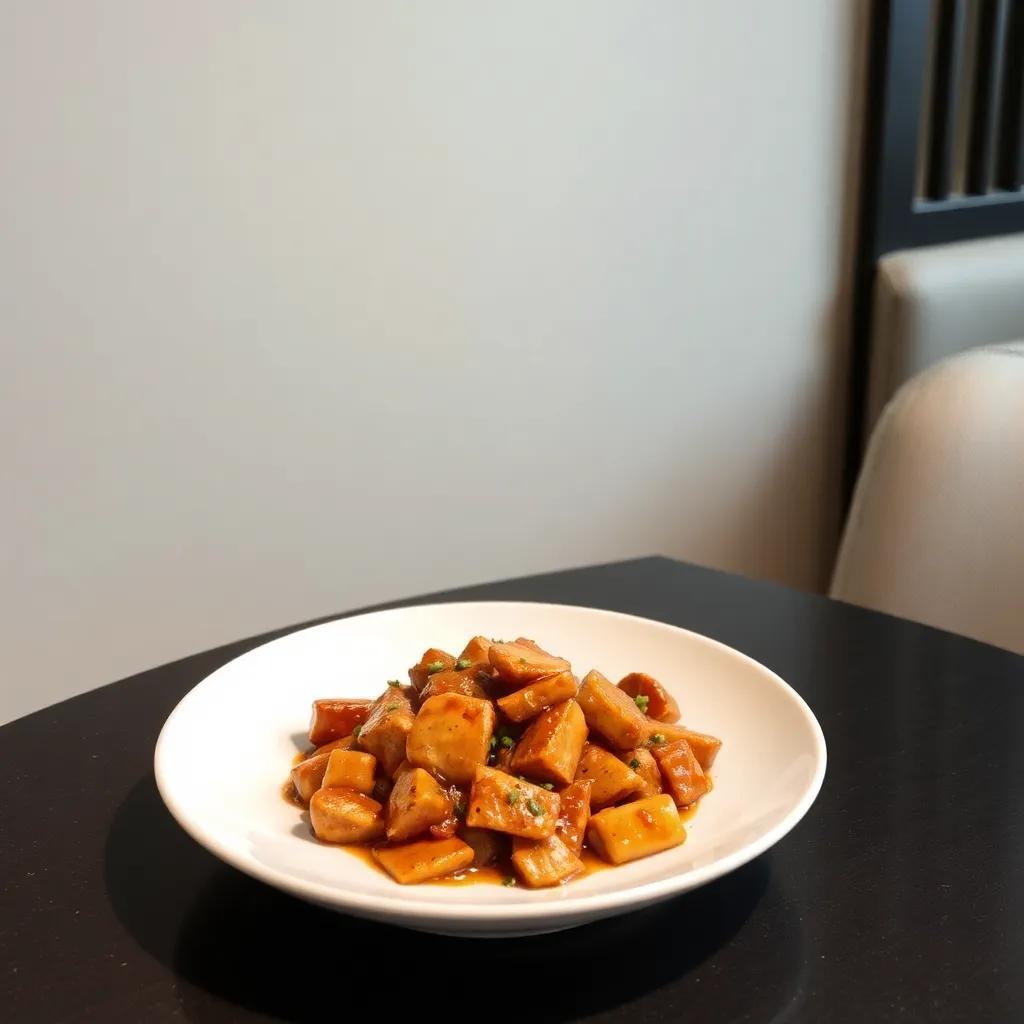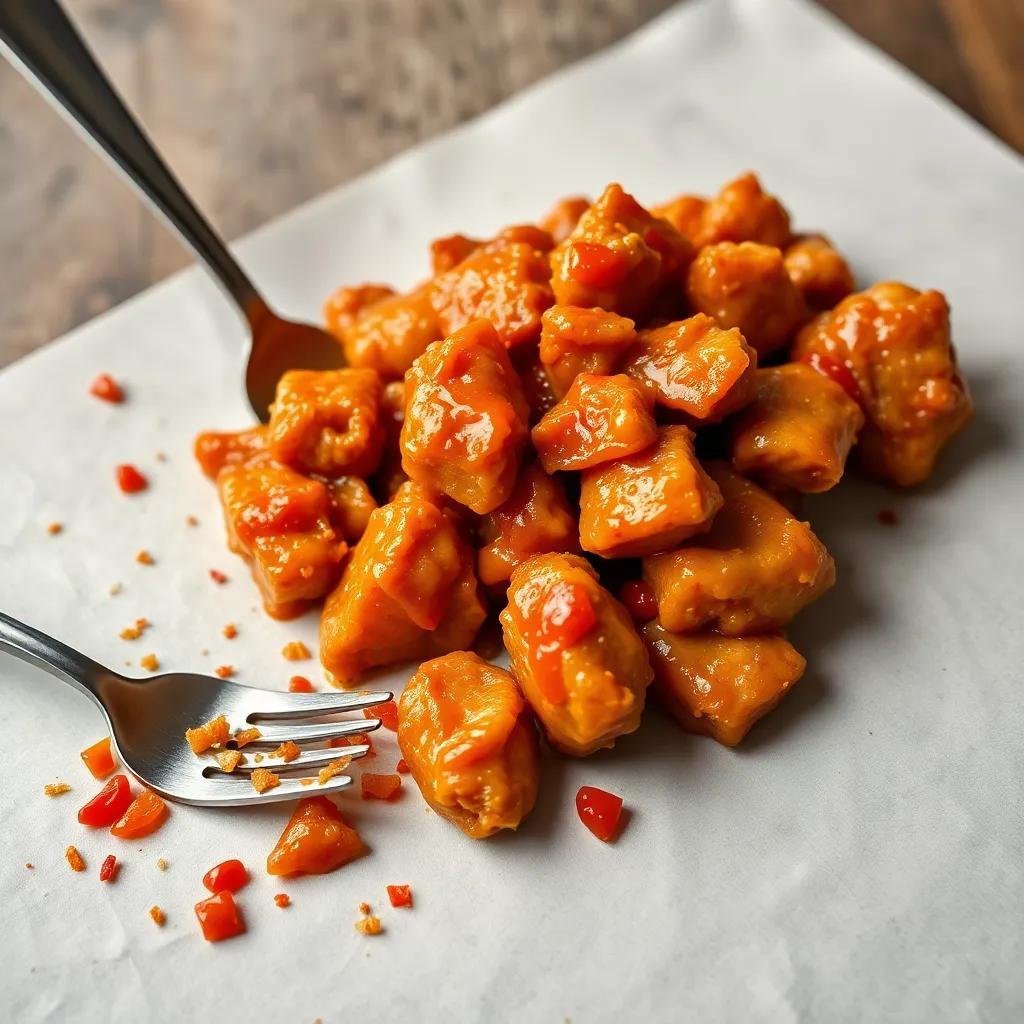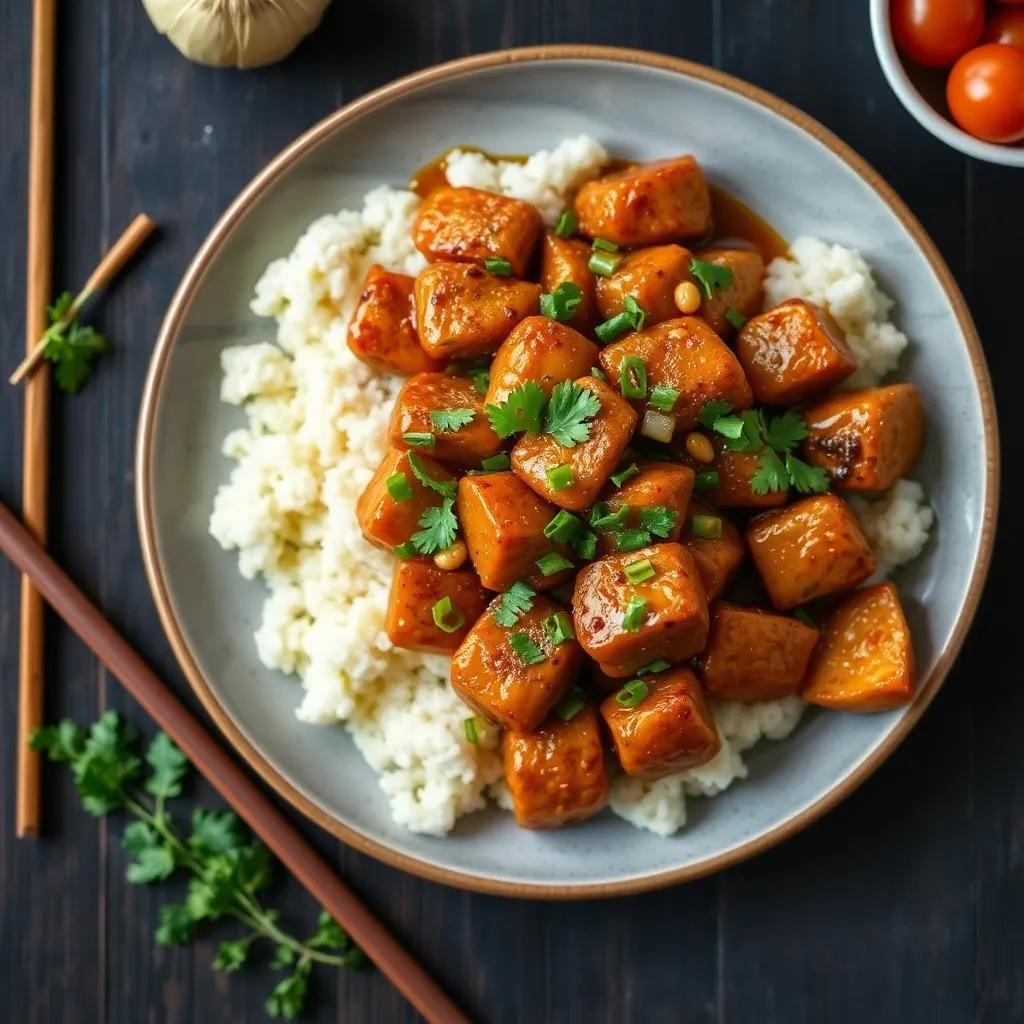Authentic Mapo Tofu Recipe: Easy, Spicy, and Vegan-Friendly Delight
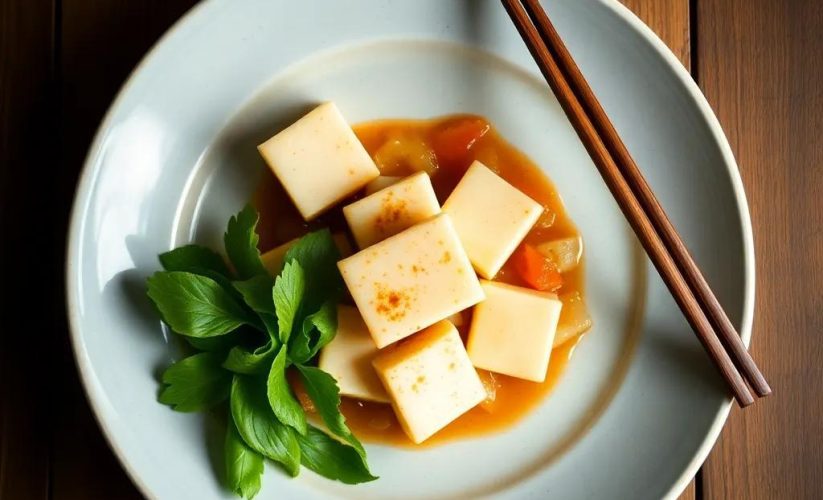
Authentic Mapo Tofu Recipe: Easy, Spicy, and Vegan-Friendly Delight
🌍 Cuisine: Sichuan Chinese
⚙️ Difficulty: Easy
Ingredients
Nutrition Facts
250 kcal
Instructions
- Press the tofu to remove excess water, then cut into 1-inch cubes and set aside.
- Toast the Sichuan peppercorns in a dry skillet over medium heat until fragrant (about 2 minutes). Grind them coarsely using a mortar and pestle or spice grinder; set aside.
- Heat vegetable oil in a wok or large skillet over medium-high heat. Add minced garlic, ginger, and the white parts of scallions. Stir-fry for 1-2 minutes until aromatic.
- Add the Doubanjiang (fermented chili bean paste) and stir-fry for 1 minute to release flavors.
- Pour in the vegetable broth and bring to a gentle boil.
- Carefully add tofu cubes to the skillet, gently stirring to coat them in the sauce without breaking them.
- Add soy sauce, chili oil, sugar, and half of the ground Sichuan peppercorns. Simmer for 5-7 minutes, allowing the tofu to absorb the flavors.
- Stir the cornstarch slurry again and slowly drizzle into the skillet while gently stirring. This will thicken the sauce. Cook for another 1-2 minutes until sauce thickens.
- Taste and adjust salt or spice levels as needed.
- Sprinkle the remaining ground Sichuan peppercorns and the green parts of the scallions over the top.
- Remove from heat and serve hot over steamed rice.
- OPTIONAL: Drizzle extra chili oil on top for added heat.
Serving Suggestions
- Serve over freshly steamed jasmine or short-grain rice to balance the spiciness.
- Pair with stir-fried greens like bok choy or Chinese broccoli for a well-rounded meal.
- Accompany with a light cucumber salad to cool the palate.
- Add a side of vegan hot and sour soup for a complete Sichuan-style meal.
- Sprinkle with toasted sesame seeds for a nutty finish.
- Enjoy with cold jasmine tea to complement the flavors and spice.
- For extra texture, garnish with chopped roasted peanuts or cashews.
Table of Contents

Intro
Mapo Tofu is one of those dishes that easily captivates both the eyes and the palate with its bold flavors and inviting textures. What makes this version truly special is how it captures the authentic spirit of Sichuan cuisine—delivering a perfect balance of spicy, numbing, and savory notes without relying on any animal products. Whether you’re a seasoned cook or a curious kitchen explorer, this recipe offers an approachable yet exciting culinary adventure that comes together in under half an hour.
This vibrant dish shines as a comforting weeknight dinner that pairs beautifully with simple steamed rice, making it an ideal option for busy evenings when you want something satisfying without the fuss. It’s also a fantastic choice to duce friends or family to the intriguing world of Chinese spices and flavors, especially if they’re seeking plant-based meals that don’t compromise on depth or heat. Versatile and crowd-pleasing, Mapo Tofu adapts effortlessly to both casual meals and the centerpiece of a themed dinner gathering, inviting everyone to savor a taste of Sichuan’s fiery magic.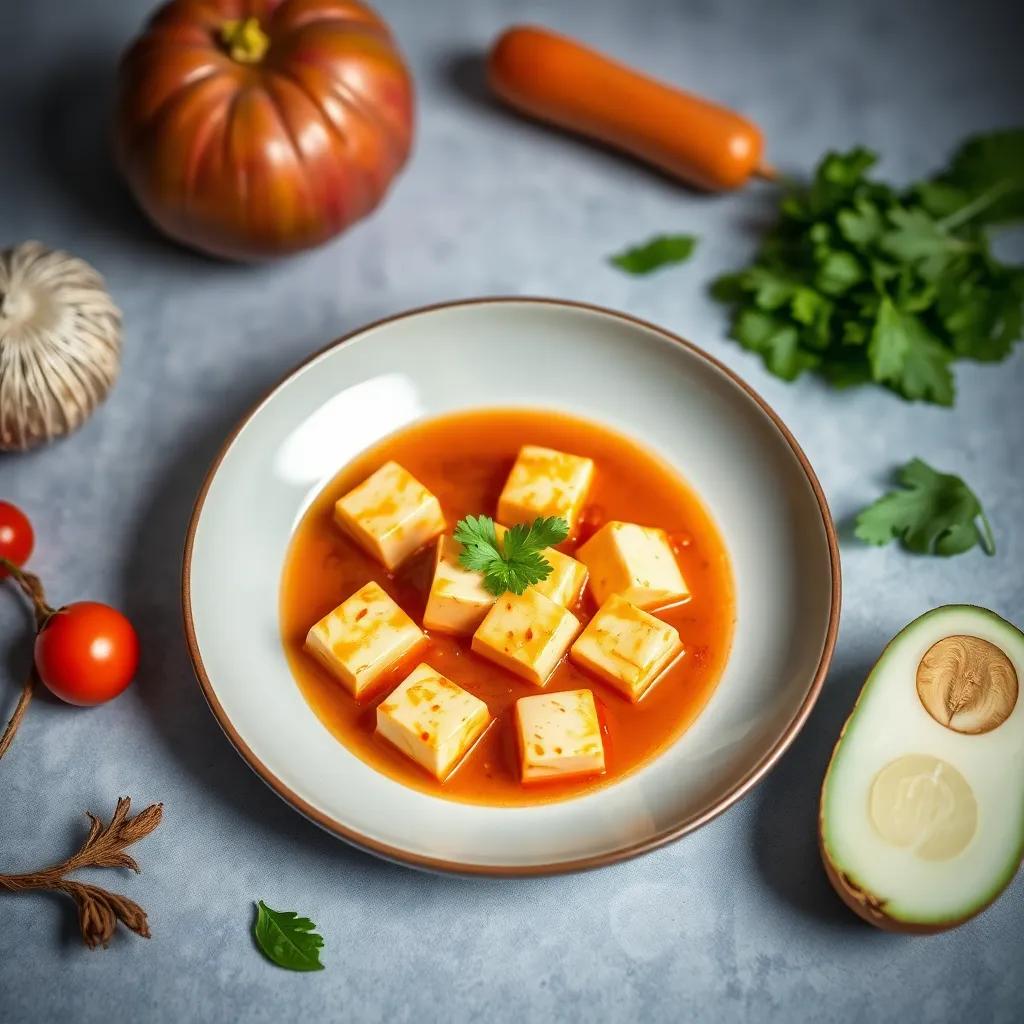
Ingredient Notes
Authentic Mapo Tofu is defined by a few standout ingredients that bring its signature layers of flavor, texture, and aroma to life. Understanding these key components not only boosts your confidence in making the dish but also allows for thoughtful substitutions when needed.
Doubanjiang (Fermented Chili Bean Paste): Often hailed as the soul of Sichuan cuisine, doubanjiang provides the unmistakable umami-rich heat that permeates Mapo Tofu. This fermented paste is made from broad beans, chili peppers, and salt, resulting in a deep, savory, and slightly funky profile that elevates the entire dish. When shopping, look for doubanjiang labeled as “Pixian” for the most authentic and robust flavor. If unavailable, a good-quality spicy miso or chili garlic sauce can serve as a temporary stand-in, though the depth might be milder.
Sichuan Peppercorns: More than just a spice, these unique peppercorns impart a characteristic tingling, numbing sensation known as “málà” (麻辣), which perfectly balances the chili’s heat. For best results, toast them lightly in a dry pan until fragrant, then grind coarsely to preserve their mouth-tingling effect and floral aroma. If you can’t find Sichuan peppercorns, a small pinch of freshly ground black pepper can provide some warmth but won’t replicate the signature numbing sensation.
Firm Tofu: Choosing the right tofu is crucial. Firm or extra-firm tofu holds its shape beautifully during cooking, ensuring you get tender cubes that soak up the spicy sauce without turning to mush. For the best texture, press the tofu beforehand to remove excess moisture. Silken tofu, while soft and delicate, will result in a creamier but less structured dish—something to experiment with if you prefer a silkier mouthfeel.
Chili Oil: This ingredient adds both heat and a vibrant reddish sheen that makes the dish visually enticing. Look for chili oil infused with toasted chili flakes and sometimes garlic for added aroma. Adjust the amount based on your preferred spice level. If store-bought chili oil isn’t accessible, you can make a quick homemade version by gently warming oil with chili flakes and a few aromatics.
By paying attention to these essential ingredients, you’ll capture the authentic essence of Mapo Tofu while also gaining flexibility to customize the dish to your pantry and palate. Each component plays its part in weaving together the bold and complex tapestry of flavors that make this dish unforgettable.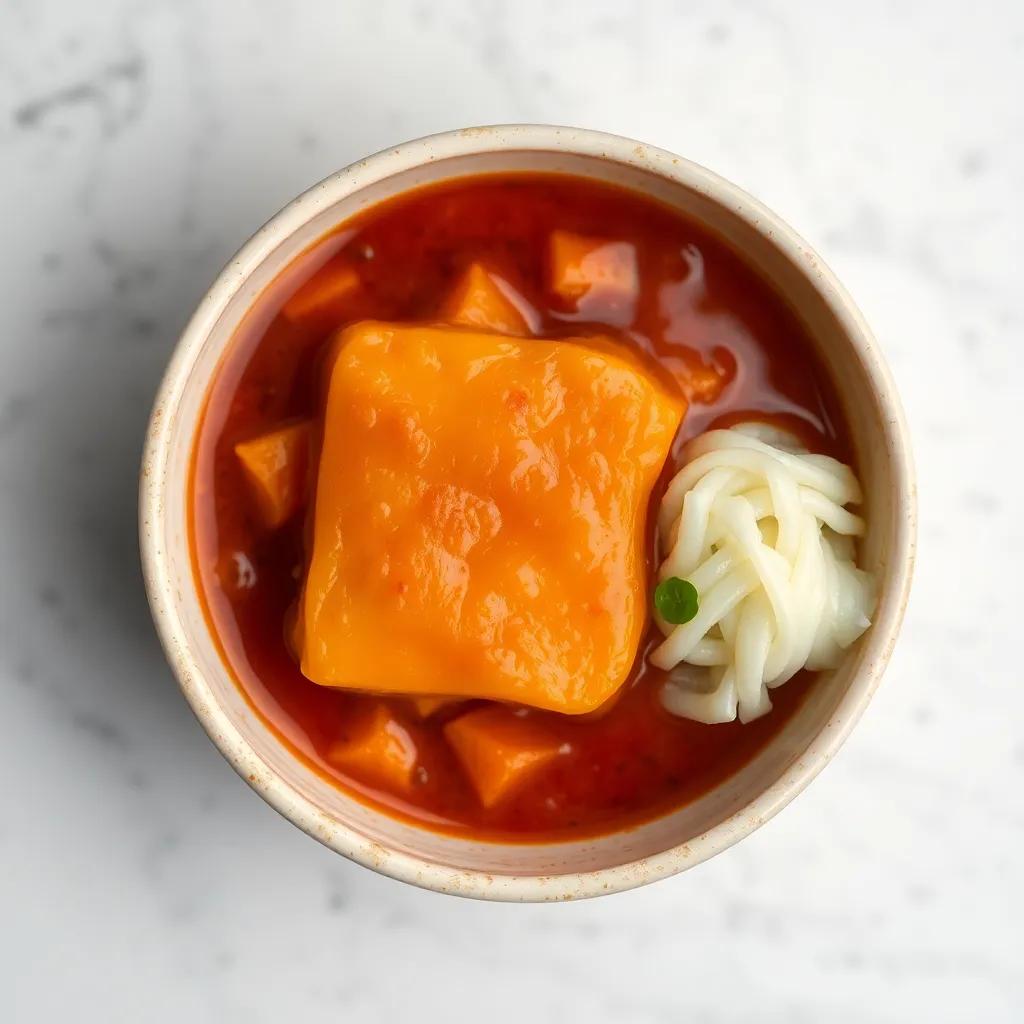
Tips & Variations
Elevate your Mapo Tofu experience with these practical tips and creative variations that help you customize the dish to suit different tastes, textures, and dietary preferences:
- Perfecting Tofu Texture: To ensure the tofu holds up well and soaks in the sauce, pressing it for at least 15 minutes to remove excess moisture is key. Alternatively, for a silkier, creamier texture, try using soft or silken tofu—just handle gently to avoid breaking the cubes. Experimenting with different tofu types can transform the mouthfeel and richness, tailoring the dish to your preference.
- Balancing Heat and Numbing Spice: The hallmark “málà” sensation of Mapo Tofu comes from the combination of chili heat and the numbing tingle of Sichuan peppercorns. If you’re new to this flavor profile or prefer milder dishes, start with less chili oil and half the peppercorns, then gradually increase after tasting. Conversely, for adventurous eaters, add extra chili oil or sprinkle toasted crushed peppercorns on top for a fresh punch.
- Doubanjiang Alternatives: Since authentic Pixian doubanjiang can be tricky to find, a mix of Korean gochujang blended with a spoonful of fermented black bean paste can emulate the savory depth and spiciness. For a less intense but still flavorful swap, use a chili garlic sauce combined with miso paste. Avoid skipping this ingredient entirely, as it is the backbone of the dish’s umami character.
- Turning Up the Umami: While this recipe is already rich, adding finely minced shiitake mushrooms or dried mushroom powder into the sauce can deepen the savory complexity without altering the vegan-friendly nature. A splash of mushroom soy sauce or tamari adds extra depth, especially useful if you’re aiming for gluten-free.
- Custom Protein Boost: If you want a heartier variation or more protein, toss in cooked edamame, crumbled tempeh, or sautéed king oyster mushrooms. These options enhance texture and nutritional value while keeping the dish plant-based and entirely vegan.
- Gluten-Free Adjustments: Use tamari or coconut aminos instead of regular soy sauce to make this dish gluten-free. Also, double-check the fermenting paste and chili oil labels to avoid hidden gluten-containing ingredients.
- Serving Style Variations: Mapo Tofu isn’t just for rice! Try spooning it over cooked noodles, steamed quinoa, or even roasted root vegetables for a modern twist. For a lighter meal, serve alongside a cooling cucumber salad or blanched greens dressed with sesame oil and soy.
- Storage Tip for Best Flavor: The sauce tends to develop even deeper flavors the next day, making Mapo Tofu an excellent make-ahead meal. When reheating, add a splash of vegetable broth or water to loosen the sauce and gently reheat on low to preserve tofu integrity.
By applying these tips and variations, you can make this beloved Sichuan classic uniquely your own—whether you crave daring spice, a softer texture, or need to accommodate dietary needs—without ever sacrificing the vibrant soul of authentic Mapo Tofu.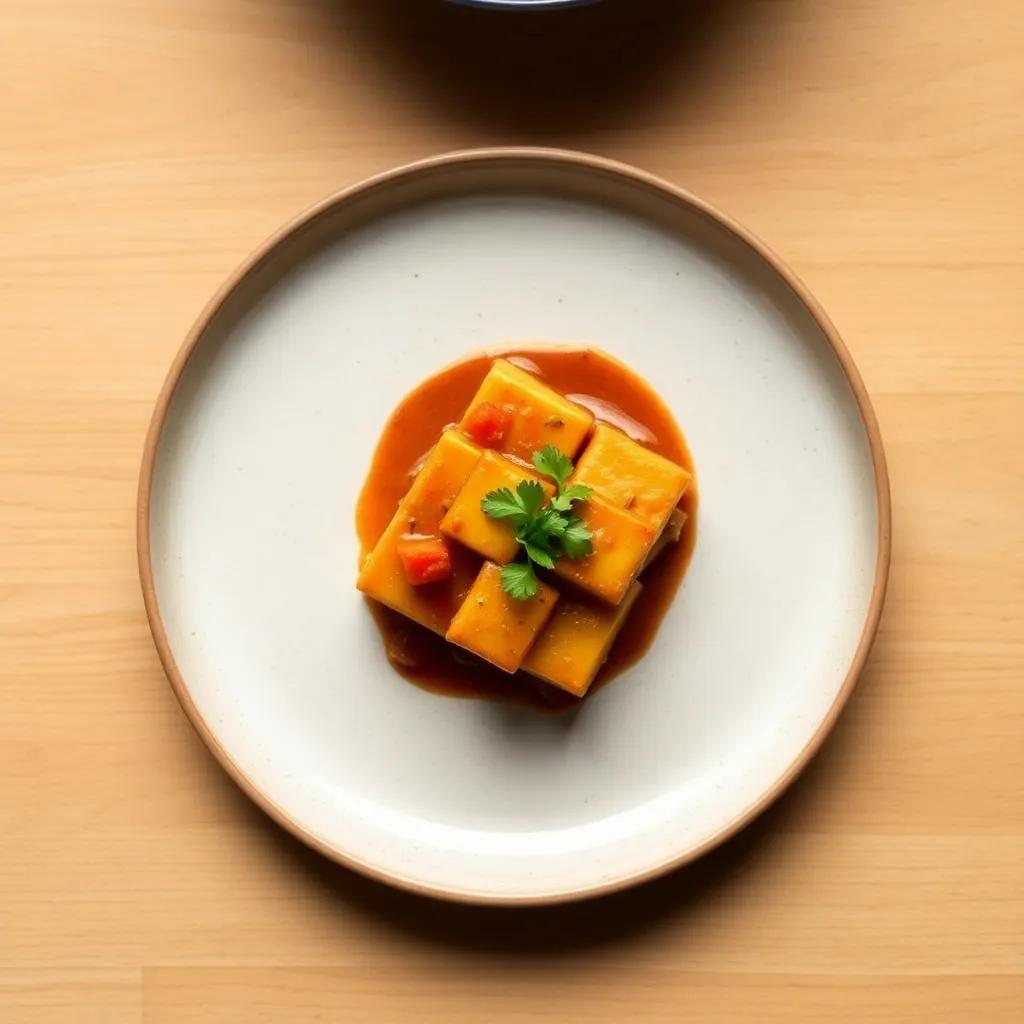
Leftovers & Storage
To keep your Mapo Tofu as vibrant and delicious as when freshly made, proper storage is key. Because tofu readily absorbs flavors, leftover Mapo Tofu often tastes even more harmonious the next day, as the sauce continues to meld with the tofu cubes. Here’s how to make the most of your leftovers:
Refrigeration:
Transfer any uneaten Mapo Tofu to an airtight container within two hours of cooking to maintain freshness and prevent the tofu from drying out. Stored in the fridge, it will stay safe and flavorful for up to 3 to 4 days. When packing, choose a container that seals tightly to preserve moisture and prevent the absorption of other fridge odors.
Freezing:
Mapo Tofu freezes well, making it a convenient option for meal prep. Use a freezer-safe container or heavy-duty freezer bags, and portion the dish in single- or double-serving sizes for easy thawing. Keep in mind that freezing may slightly alter the texture of the tofu, making it a bit firmer or more porous once thawed. To thaw, move it to the fridge overnight or use the defrost setting on your microwave before reheating.
Reheating Tips:
Reheat leftovers gently over medium-low heat in a skillet or saucepan to avoid breaking apart the tofu cubes. Adding a splash of vegetable broth or water while warming helps loosen the sauce, preventing it from sticking or burning. Avoid high heat, which can cause the tofu to crumble and the sauce to reduce too much. Alternatively, microwave reheating is convenient—cover the dish loosely and warm in short intervals, stirring halfway through.
Meal Prep & To-Go:
Mapo Tofu’s balanced flavors and satisfying texture make it a fantastic choice for batch cooking. Prepare a large batch, refrigerate or freeze in portion-sized containers, and you’ll have a ready-made spicy, vegan-friendly meal whenever time is tight. It also packs well for work or school lunches—just keep the rice and Mapo Tofu in separate compartments if possible to avoid sogginess. Reheat thoroughly before enjoying.
By following these storage and reheating practices, you’ll preserve the dish’s bold flavors, silky tofu texture, and signature numbing-spicy kick, ensuring each bite is as delightful as the first.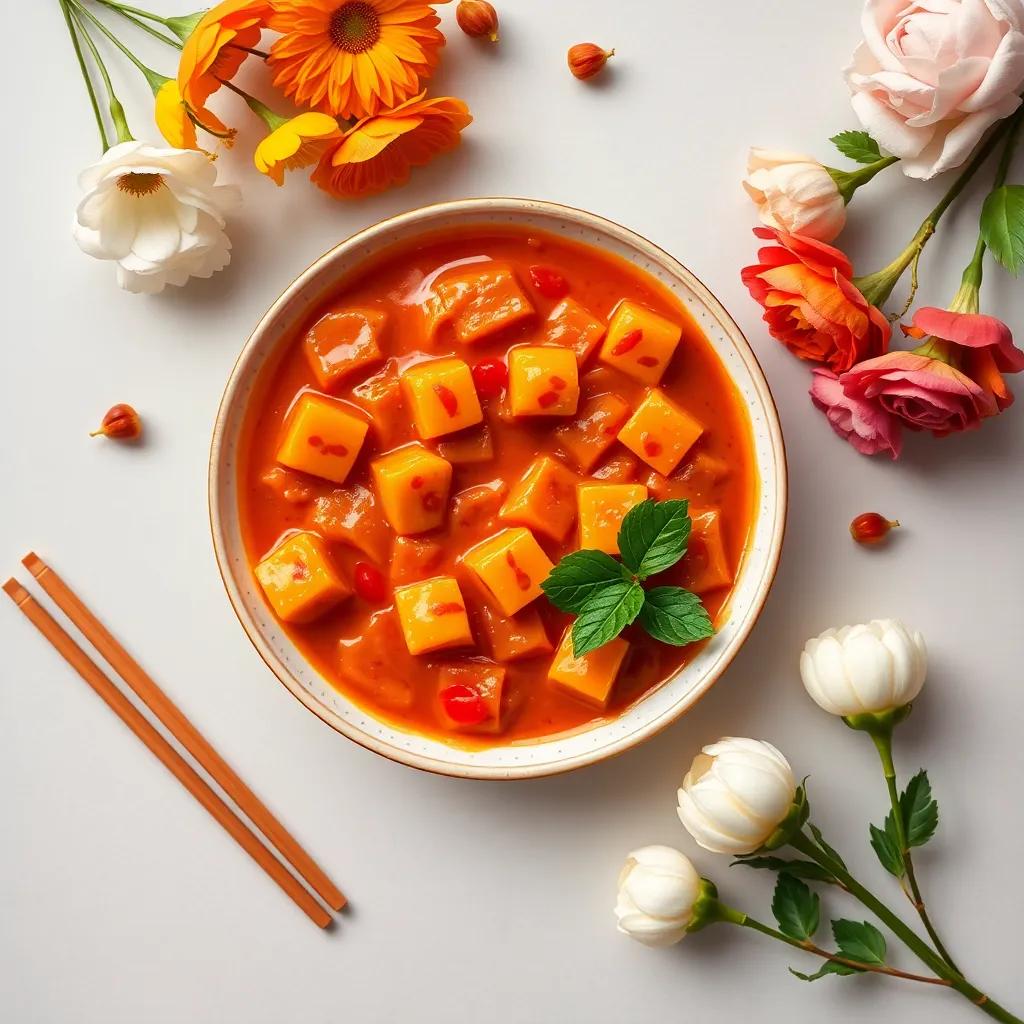
Behind the Recipe
Mapo Tofu is more than just a spicy, savory dish—it’s a vibrant expression of Sichuan’s rich culinary heritage and a testament to how simple ingredients can create extraordinary depth of flavor. Originating from the bustling city of Chengdu in China’s Sichuan province, Mapo Tofu has long been celebrated for its distinctive “málà” profile—a harmonious blend of fiery heat from chilies and a signature numbing sensation from Sichuan peppercorns. Traditionally, the dish features minced pork or beef, but over time, many plant-based adaptations have emerged, embracing tofu as the star protein and making it accessible to vegans and vegetarians around the world.
The story behind its name is as colorful as its taste: “Mapo” roughly translates to “pockmarked old woman,” referring to the legendary creator—a humble yet skilled innkeeper known for her unique chili and bean paste concoction that captivated locals and travelers alike. Her recipe, passed down through generations, evolved into a beloved staple that now graces tables from Sichuan homes to international kitchens.
What makes this vegan-friendly take on Mapo Tofu especially exciting is how it honors these deep cultural origins while shedding animal ingredients. This version preserves the essential spicy, numbing, and umami-rich qualities through carefully balanced seasonings and traditional techniques like toasting peppercorns and stirring in fermented chili bean paste. It offers a gateway to authentic Sichuan flavors without compromise, inviting cooks everywhere to experience a dish that’s both rooted in history and refreshingly modern.
By approaching Mapo Tofu with respect for its cultural background and mindful substitutions, this recipe bridges tradition and contemporary culinary values—turning a centuries-old comfort food into a vegan delight that still carries the soul and spirit of Sichuan vividly on your plate.
FAQ
Can I use a different type of tofu if I can’t find silken tofu?
How spicy is this recipe, and can I adjust the heat level?
Is it possible to prepare this dish ahead of time and reheat it later?
Can I freeze leftover Mapo Tofu?
What are some good ingredient swaps if I want to make this dish nut-free or soy-free?
Can I make this dish without fermented ingredients like doubanjiang or soy sauce?
What side dishes pair well with this vegan Mapo Tofu?
Enjoy Your Meal!
There you have it—a vibrant, easy-to-make Mapo Tofu that brings all the bold, spicy flavors of this classic dish to your vegan kitchen. Whether you’re a longtime fan or trying it for the first time, this recipe shows that authentic taste and plant-based goodness can beautifully come together on one plate.
We’d love to hear how your culinary adventure turns out! Feel free to leave a comment, share your favorite tweaks, or rate the recipe to help fellow food lovers find their way to this delightful, comforting meal. Happy cooking!










